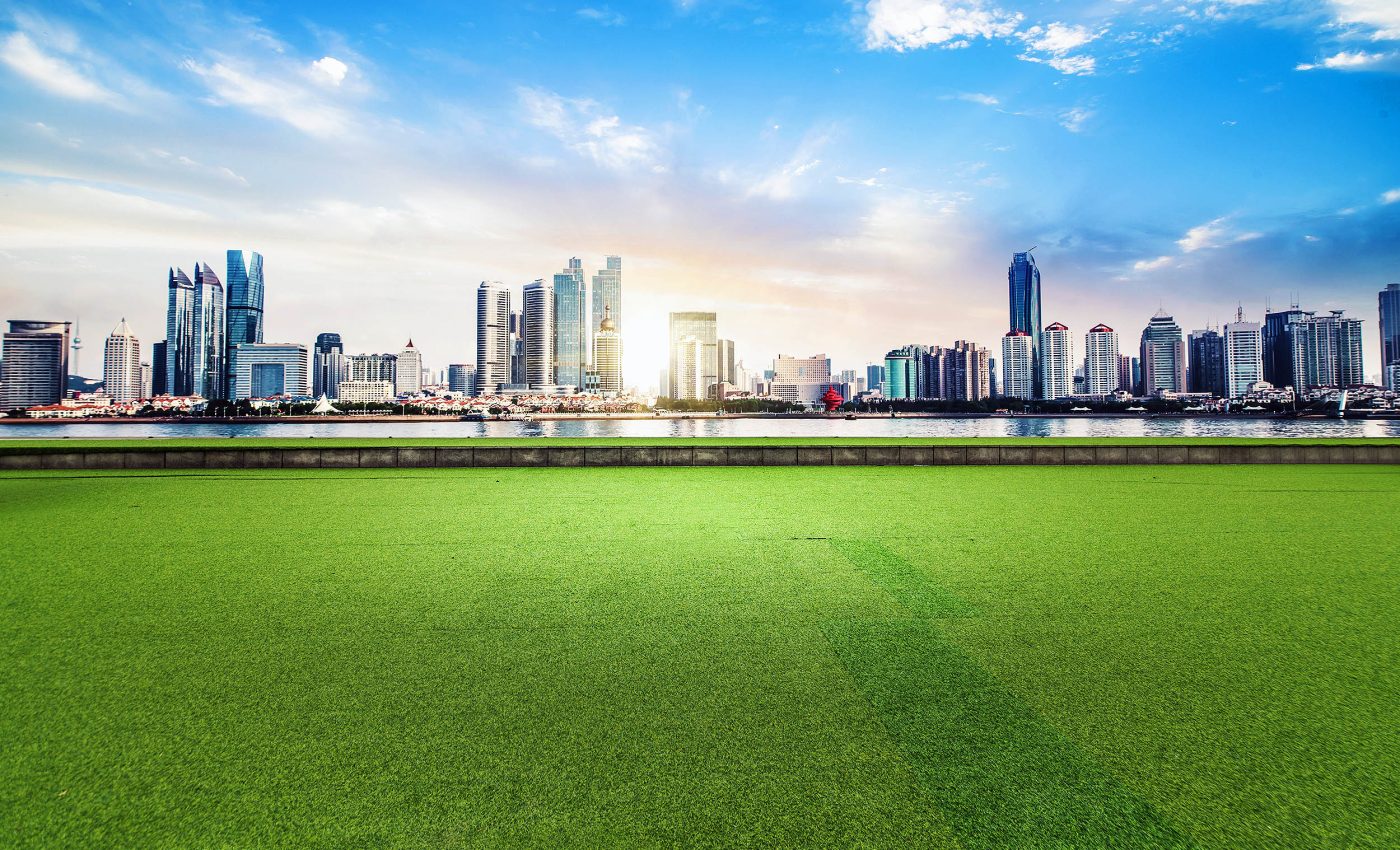
Artificial turf with a twist is a cool solution for hot cities
Turf is often a defining feature of urban life, where limited space for outdoor activities, especially sports, is common. As cities grow, natural grass fields in public parks and sports courts are frequently replaced with artificial turf, a sturdier substitute designed to withstand continuous use.
However, while this solution addresses the wear-and-tear issue, it brings its own set of problems for city-dwellers and the urban environment.
A group of innovative scientists from the Netherlands has found a way to make artificial turf work in our favor.
Unveiling artificial turf 2.0 for cities
This Dutch scientific team has developed an artificial turf system that incorporates subsurface water storage and capillary irrigation.
The objective? To significantly reduce surface temperatures, making cities cooler and safer.
“With circular on-site water management below the field, a significant evaporative cooling effect is achieved,” stated the research’s lead author, Dr Marjolein van Huijgevoort from KWR Water Research Institute.
How it works: Tech beneath the turf
Beneath the turf and shockpad lies a specially designed open water storage layer that revolutionizes how artificial turf interacts with its environment.
This water retention system, equipped with strategically placed cylinders, collects rainwater and transports it back to the surface, enabling natural evaporation.
This process delivers cooling effects precisely when needed, as evaporation only takes place when cooling demand exists.
Standard artificial turf can heat up to a scorching 70°C (158°F) under the sun, posing significant risks such as burns, heat-related illnesses, and even life-threatening conditions like heat stroke. However, this innovative solution changes the game entirely.
By harnessing the natural cooling power of evaporation, it transforms artificial turf from a potential hazard into a safe and comfortable playing surface, even on the hottest days.
This advancement not only improves the safety and usability of urban sports fields but also contributes positively to the urban microclimate, making cities more livable and sustainable.
Turning down the heat with artificial turf
Research conducted in Amsterdam demonstrated the efficacy of this novel concept.
By replacing conventional turf with the self-cooling variant, temperatures markedly decreased.
The team’s research revealed that on a sweltering day in June 2020, the modified turf hit a surface temperature of 37°C (98.6°F) – a mere 1.7°C (3.1°F) above natural grass.
In contrast, temperatures of the standard artificial turf skyrocketed to 62.5°C (144.5°F).
Substantial temperature differences were also observed above the turf.
“We found lower air temperatures 75cm above the cooled plots compared to conventional artificial turf fields, especially during the night,” notes van Huijgevoort.
This discovery implies the cooled plots might facilitate reducing the urban heat island effect.
Best of both worlds
This artificial turf, with its natural self-cooling capability, offers a combination of benefits. It’s sturdy, maintains optimal temperatures, and promotes a safe sports environment.
Another advantage is its impressive rainwater storage capability, nearly on par with natural grass. This storage capacity mitigates urban flooding by reducing stormwater drainage. The system can also be manually watered during dry periods, making it a versatile solution.
Although installation costs might initially be double that of a conventional artificial turf, the researchers believe that a comprehensive cost-benefit analysis could truly reveal the value of this investment.
More research is needed to understand the wider impacts of this cooling turf on surrounding spaces and on cities overall. However, the preliminary results are encouraging.
As cities grow and outdoor play areas become a necessity, this innovative turf might just be the game-changer we need, offering the benefits of subsurface water storage without the downsides of traditional artificial fields.
Potential environmental benefits
Beyond cooling effects and urban flood mitigation, this innovative artificial turf could have several additional environmental benefits.
By reducing the need for chemical fertilizers and pesticides associated with natural grass maintenance, this system may also help lower the urban chemical load.
Moreover, the use of recycled materials in constructing the water storage layer can further enhance its sustainability profile.
This approach aligns with global efforts to promote circular economies, where resources are reused and repurposed, minimizing waste and environmental impact.
As cities continue to grapple with climate change challenges, solutions like these that offer both functional and environmental advantages will be increasingly valuable.
The full study was published in the journal Frontiers in Sustainable Cities.
—–
Like what you read? Subscribe to our newsletter for engaging articles, exclusive content, and the latest updates.
Check us out on EarthSnap, a free app brought to you by Eric Ralls and Earth.com.
—–














